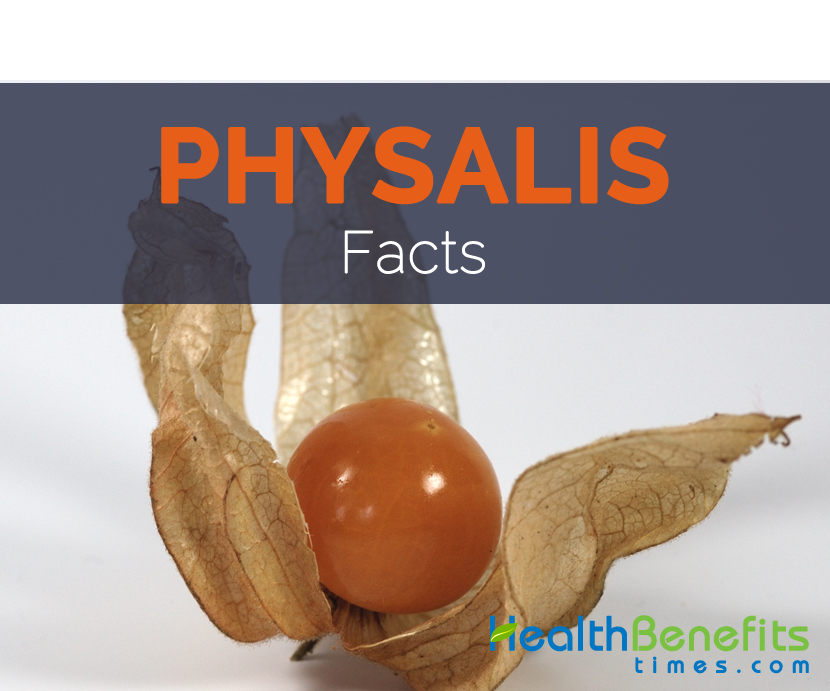
| Name | Physalis (Cape Gooseberry) |
|---|---|
| Scientific Name | Physalis peruviana |
| Native | Indigenous to South America in the high altitude tropical Colombia, Chile, Ecuador and Peru |
| Common/English Name | Aztec Berry, Winter Cherry, bladderberry, Peruvian Ground Cherry, Gooseberry-Tomato, goldenberry, Husk Cherry, Inca Berry, Peruvian Cherry, Cape Gooseberry, Poha, Cherry Tomato Goldenberry, Poha Berry, Strawberry Tomato, Barbados Gooseberry, obra cabbage |
| Name in Other Languages | Arabic : Hhabwah, Hhashîsh Sakrân Fijian : Botebote Yadra, Kospeli, Maulanggua Finnish : Ananaskirsikka, Kapinmarja Czech : Mochyně Peruánská Peru : Capulí, Pasa Capulí, Aguaymanto Danish : Ananaskirsebaer, Kapstikkelsbaer Italian : Alchechenge Giallo, Alchechengi Giallo Ecuador : Uvilla ( Spanish ) Polish : Miechunka Peruwianska French : Alkékange Jaune Doux Nauruan : Oatamo, Watamo Chinese : Deng Long Cao, Deng Long Guo Gabon : Alkekengi, Coqueret Brazil : Alquequenje Amarelo, Bate-Testa Mangarevan : Maru I – Kiribati : Te Baraki, Te Bin Tahitian : Tupere Dutch : Ananaskers, Goudbes, Kaapsche Kruisbes Japanese : Ke Hôzuki Swedish : Ananaskörsbär, Kapkrusbär Chile : Capuli, Amor En Bolsa, Bolsa De Spanish : Alquequenje, Capuli, Uvilla Malawi : Jamu, Peruvian Cherry Bolivia : Capuli, Motojobobo Embolsado Nepalese : Ishmagol, Jangalii Mevaa, Jangali Meva, Rasabarii India : Macao, Makowi, Rasbhari, Teparee Sri Lanka : Thol Thakkali ( Sinhalese Niuean : Manini, Manini Fua Lalahi German : Ananaskirsche, Kap-Stachelbeere Columbia : Uvilla, Uchuva, Vejigón, Guchavo Cook Islands : Tupera, Tūpere, Tūpere ( Maori ) Philippines : Lobolobohan ( Tagalog) Turkish : Altın Çilek, Sarhosh Out Egypt : Harankash, Is-Sitt Il-Mistahiya; Venezuela : Topotopo, Chuchuva, Alquequenje Amarillo Portuguese : Groselha-Do-Peru Tomateiro Inglês Sudan : Habwa ( Arabic ) Tongan : Ku‘Usi Quecha : Aguaymanto, Topotopo Slovenian : Perujsko Volčje Jabolko Hawaiian : Pa‘Ina, Poha South Africa : Cape Gooseberry, Golden Berry Mexico : Cereza Del Peru |
| Description | Physalis is a smooth berry which looks like a small, round yellowish tomato. It is sub-globose berry, 1.25–2 cm diameter, each enclosed in a bladder like husk which will become papery on maturity. It is green while young turning to a smooth, glossy, golden –yellow to orange when ripe with many tiny (2 mm diameter) yellowish, flat seeds surrounded in the juicy palatable pulp. |
| Plant Growth Habit | Herbaceous or soft-wooded, perennial somewhat vining plant |
| Growing Climate | Sunny, frost-free location, sheltered from strong winds |
| Soil | Well drained soil but does best on sandy to gravelly loam. Good crops are obtained on rather poor sandy ground |
| Plant Size | 2 to 3 ft. (1.6-0.9 m) in height but occasionally may attain 6 ft (1.8) m |
| Branch | Ribbed, often purplish, spreading branches covered with fine hairs |
| Leaf | Nearly opposite, velvety, heart-shaped, pointed, randomly-toothed leaves 2 3/8 to 6 in (6-15 cm) long and 1 1/2 to 4 in (4-10 cm) wide |
| Flowering Season | Starts from June to August |
| Flower | Bell-shaped, nodding flowers form in the leaf axils. They are yellow in color with dark purple-brown spots in the throat, and cupped by a purplish-green, hairy calyx. Fruit buds are produced after 12 to 13 stem internodes are formed |
| Fruit shape & size | Sub-globose berry, 1.25–2 cm diameter, each enclosed in a bladder like husk which becomes papery on maturity |
| Fruit color | Green while young which turns to a shiny, smooth, golden –yellow to orange once ripe |
| Flesh Color | Golden –yellow to orange colored |
| Fruit Peel | Smooth, waxy, orange-yellow skin |
| Flavor/aroma | Slightly tart flavor |
| Fruit Taste | Sweet along with a pleasing grape-like tang. Husk is bitter and are unpalatable |
| Seed | Numerous tiny (2 mm diameter) yellowish, flat seeds |
| Varieties/Types | Giant, Giallo Grosso, Golden Berry, Edulis, Giant Poha Berry, Long Aston, Golden Berry |
| Season | During August to November |
| Major Nutrition | Vitamin B3 (Niacin) 3.92 mg (24.50%) Iron, Fe 1.4 mg (17.50%) Vitamin C (Ascorbic acid) 15.4 mg (17.11%) Vitamin B1 (Thiamin) 0.154 mg (12.83%) Carbohydrate 15.68 g (12.06%) Phosphorus, P 56 mg (8.00%) Vitamin A 50 µg (7.14%) Protein 2.66 g (5.32%) Vitamin B2 (Riboflavin) 0.056 mg (4.31%) Total Fat 0.98 g (2.80%) Calcium, Ca 13 mg (1.30%) |
| Health Benefits |
|
| Calories in 1cup (145gm) | 74 Kcal |
| Traditional Uses |
|
| Precautions: |
|
| How to Eat |
|
| Other Facts | Physalis is used as an ornamental plant. |
Comments
comments